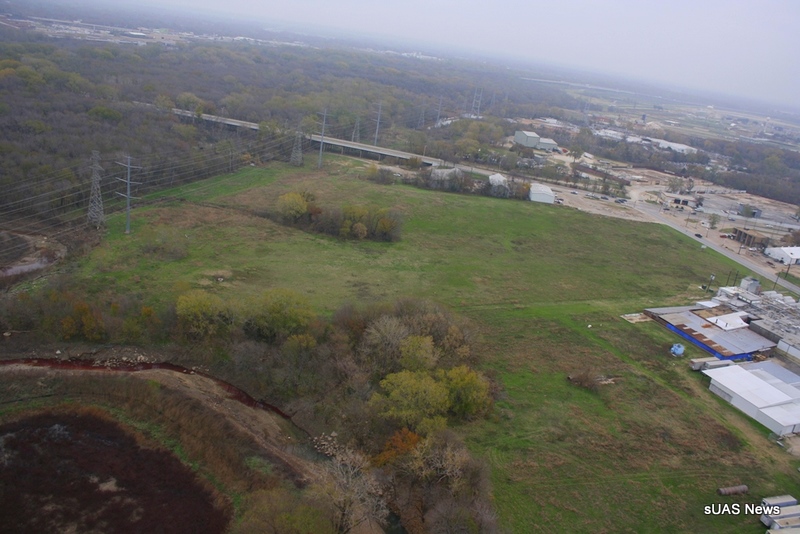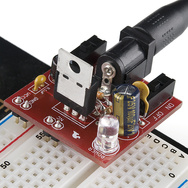I have been working through the idea that in the future the functional equivalent of military UAV surveillance systems will be implemented by government agencies for domestic policing. I am interested in the software systems associated with networked surveillance platforms.The following is some fiction that I wrote to help me visualize the processes associated with such systems, I thought readers of this site might be interested.
Domestic Vultures
"I'll take these love", I said pushing the fat plastic Coke, a super sized Mars and cellophane of salt & vinegar chips toward the cash register. Finding opportunity was getting easier. With gf waiting in the Toyota around the corner, I was about to make the first score of the day and I think the Asian girl calculating in front of me could feel it, "$5.50 please" she said nervously.
I think somehow people can sense me, instinctively know my intent. I guess I must be unconsciously broadcasting a malevolence or it could just be the open sores, odour of burnt plastic and disheveled appearance. I don't like to be rushed, while she waited for the money, I peered over her shoulder through the door behind, seeing the flash of a television, maybe hubby was back there, better make this a quiet one.
I reached behind and pulled out my heart starter; "can I get a plastic bag with that, and while your at it, give me all the notes in the register". I watched in fascination as she crumbled before me, smiling, my dominant to her subservient was complete. I lent over the counter, getting a little closer, her eyes expanding while flicking between trusty Starter and my grin, no doubt her thoughts falling toward more intimate deeds. Reveling in the moment, I considered escalating things, but back to matters at hand. "Now that's a good girl, put that (the cash) in first, the tasty’s on top".
The electronic chime sequence triggered by opening the door provided a lovely counterpoint to her whimpers as I exited. The smell of gasoline and gf's deodorant greeted me as I climbed into the Toyota, a quick twist and mouthful of sweet acid, i'm away clean. As gf rattles on, I count the money.
1000 meters altitude 3km away at 11.30am
Vulture 3 (as christened by the implementation team) was running station keeping program alpha, hooking a sharp-edged positive thermal and riding it upward when the UMTS 850MHz 3G modem went out of standby. Handshake complete, a 1.8 Mbps connection was made over HSDPA and IP packets streamed into the autopilot control board. The ultra low power processor chomped on these, all the while intermittently polling the GPS receiver, air pressure and IR attitude sensors.
A computed flight path now in memory, signals were sent to wake up servos throughout the small aircraft. Doors on the back of the fuselage opened and a retractable two bladed propeller arm rotated up to vertical, the spinner biting into the air as the brush-less electronic motor sparked into life, the ailerons, elevators and rudder fluttering in combination to maneuver the aircraft to a steep dive heading it toward GPS coordinates 3km away, ETA three minutes.
address censored, surveillance subcontractor’s office 6pm
"yo team, whatup?" Jonathon submitted to the chat-room. Leaning back on his ergo chair taking a long slurp of his DK coffee, he watched the content frame scroll with updates from the morning shift. Apart from some minor traffic (major boring stuff) and the regular stakeout missions, it had been a pretty quiet day.
The only item of interest on his patch was a robbery assault. A Vulture had arrived post event, but got a number plate leaving the scene. The operator had polled the networks for activated location services with the same position vector as the plate (in the hope of inserting a bug) without success. It seemed this bad guy either was across RX24 proticols or so low tech he didn't have a mobile phone with integrated GPS chip.
Wireless headset on and the appropriate alarms set, he went for a quick pee before things started to get busy. The start of the shift tended to be slow but as the evening matured mission requests normally started to pile up.
"Another day another dollar"Jonathon said to the fellow next to him in front of the urinal. The fellow, a IT tech supporting his team looked across, "tell me about it, I'm off to Bali this weekend. So how are those cam streams now? Did you notice any difference with the change of network provider?"
14 Lacelle 6.15pm
“Don’t forget what I said about the smoke”, Gerry said as he watched the two skinny kids get into the beat-up Toyota. He closed both doors locking them securely.
This was the second time this week he had seen Eddie, a regular customer now. In Gerry’s estimate Eddie was coming to the tail end of the standard user lifecycle for rock stars. Usage starting spiral with requests for credit as per usual. At least in this case he had paid everything owed with enough left over to buy a little motivation.
It was routine for Gerry to make requests for any smoke as customers left. “If you come across any green, you be sure to bring it to me (big smile). You know I do like a bit of a smoke and will trade motivation for it all.”
200 George 9.35pm
“Don’t do anything I wouldn’t do”, gf told him as she got out. “Yeah, same to you.” I replied. I could see from the way she didn’t meet my eyes that something was up tonight, but quite honestly I didn’t really care. She turned walked the few steps to the black street door of the karaoke club and buzzed, the door opened and she sprang up the steps without a look back.
I guess I didn’t mind the thought of those Asian businessmen pawing her each night. They certainly paid well for the privildge. Anyhow, I felt responsible for her popularity, since we had been seeing each other she had gone from a chubby teenager to a thin but still busty girl, her natural blond hair and ofcourse chest, a big hit with the Japanese expats.
The rocks we did together straight after seeing Gerry were almost out of my system, I went back to the flat, it was time to stoke up before the main event of the evening. I called a couple of mates, we got high, shooting the crap, eating pizza in front of the tube.
address censored, surveillance subcontractor’s office 12.30am
A package appeared in Jonathon’s mission request list. Linking on the ID he made it active, with a bit of luck, this time the Vulture would be there in time to acquire a target.
Jonathon was proud of the work he did. He was employed as part of a federal government initiative. The surveillance system, of which he was a part, was a recent add-on to local law enforcement. An increasing focus on security outcomes politically, meant that blanket surveillance was now acceptable if it met budgetary considerations. While still undergoing evaluation the RX24 platform, was promised to run at a sub $100 per flight hour cost basis.
RX24 was one of a new breed of non-military surveillance systems designed to leverage friendly environment infrastructure. At its core, the RX24 system utilized a 3G cellular phone network to control a constellation of unmanned aircraft (UAVs). The UAVs, nick named Vultures, were in a 2 meter wing span ultra lightweight powered glider format, able to provide persistent stare for 6 to 12 hours (depending on usage conditions). Each Vulture was fitted with a 2kg day or night vision payload which when a data connection was opened could stream near real time surveillance images over the internet.
20 meter altitude 34 Frank 12.35am
Vulture 5’s thermal imaging payload was in automatic target acquisition mode. The autopilot board guided the aircraft in a tight figure eights above the mission address when a human sized hotspot was spat out by the pixel filter subroutine. The recognition event resulted in the autopilot processor adding a new comment in the mission chat room, “single suspect acquired 34 Frank, 12.35.22 am, actively tracking”. A white recital now appeared around the white glow of the suspect in the night vision video stream with acquire time updated every second.
A return packet stream from networkwas diverted to the DSP and the Vulture’s integrated PA started up. “This is the police, you are currently under surveillance, you are required by law to stay where you are and wait for police officers who are on route to your current location. Any attempt to evade questioning will recorded and used against you in a court of law.”





